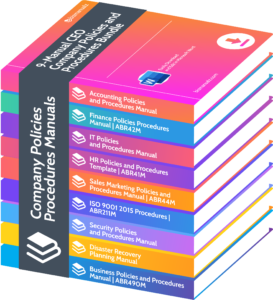What should a CEO Know about Leadership Development Programs

CEOs must have a strong understanding of leadership development programs to reach success. They are vital for transforming an organization. Companies must prioritize these programs as a key strategy in order to handle modern business issues. What should a CEO Know about Leadership Development Programs.
Leadership Development Programs for CEOs
Leadership development initiatives provide more than just basic training. They nurture leaders who can think differently, innovate, and motivate others. This creates a learning atmosphere in the organization.
Programs include executive coaching, mentoring, experiential learning, and tailored courses. These activities not only help with technical skills, but also emotional intelligence, critical thinking, decision-making, and communication.
A study by McKinsey & Company, ‘Growing Leaders: Moving Towards Maturity’, found that organizations that devote to leadership development programs are three times more likely to outperform their competitors. It’s clear that these initiatives have a major impact on business results.
It’s spooky to think of a CEO without a leadership development program!
Importance of Leadership Development Programs for CEOs
Leadership development programs are essential for CEOs, as they can shape and refine their leadership skills. These programs give CEOs a chance to gain valuable insights, make better decisions and broaden their strategic thinking.
By taking part in these programs, CEOs can learn new techniques and approaches that can help them guide their organizations to success. They provide an opportunity to network with other leaders and exchange ideas and experiences. Furthermore, they help CEOs become more self-aware, helping them recognize their strengths and weaknesses.
Also, these programs give CEOs the knowledge and skills they need to manage change in their organizations. In today’s business world, being able to adapt is key to success. Through these programs, CEOs can develop the agility to navigate uncertain times and lead their teams to good outcomes.
Mary Barra, CEO of General Motors, is a great example of the importance of leadership development programs. When she took the role of CEO in 2014, she saw the need for transformation in her company. She led to changes and a shift towards innovative technologies like electric vehicles and autonomous driving.
Barra’s successful leadership was due to the many leadership development programs she joined throughout her career. The programs provided her with the tools and knowledge she needed to drive change within an established organization.
Key Elements of Effective Leadership Development Programs
Leadership development programs must have focused goals that outline what skills and behaviors they are trying to develop. This guides individuals to their fullest potential. The program should include a range of topics and activities, such as communication and emotional intelligence. Interactive and experiential learning methods, like role-playing and simulations, help apply leadership theories. Continuous support and feedback keep participants on track. Programs must be tailored to specific needs and culture of the company for relevance and effectiveness.
Investing in leadership development will give individuals the right tools, knowledge, and experiences to succeed in business. Cultivate exceptional leaders today – make leadership development a priority! Preparing CEOs for leadership development is doable with the right strategy.
Steps to Implement Leadership Development Programs for CEOs
Leadership development programs for CEOs have been around since ancient times! Careful planning and execution is key to making sure the program is successful. Here’s a concise guide to help you out:
- Identify Needs: Assess current and future needs. Consider industry trends, growth objectives, and succession plans.
- Design Program: Define objectives, curriculum, and learning methods. Tailor it to relevant competencies and company goals.
- Select Participants: Use a thorough process to pick individuals with leadership potential and values that fit your organization.
- Deliver Program: Offer formal training, experiential learning, mentorship programs, and networking events.
- Measure Success: Establish KPIs to measure effectiveness. Evaluate progress with assessments, feedback sessions, and reviews.
- Sustain Development: Create an environment that supports continuous learning. Provide resources, coaching, and opportunities for advancement.
Remember that successful leadership development programs require proper planning and customization. Let the history of great leaders inspire you!
Benefits and Challenges of Leadership Development Programs for CEOs
Lisa, a CEO, decided to join a leadership development program. She learned active listening, communication, and strategic thinking. This changed her leadership style, and brought success to her organization.
Leadership development programs offer CEOs many advantages and difficulties.
- Benefits:
- Improved leadership: Programs give CEOs the chance to better their leadership qualities, inspiring and motivating their teams.
- Improved decision-making: These programs give CEOs knowledge about different management strategies, helping them make wise decisions.
- Improved organizational effectiveness: Programs teach CEOs how to bring positive changes to their organizations, leading to better performance.
- Succession planning: Programs enable CEOs to spot and prepare potential leaders, making sure there’s an easy transition of leadership.
- Challenges:
- Time commitment: Programs can be too time-consuming for busy CEOs. Finding balance between work and participation can be hard.
- Resistance to change: Adopting new leadership approaches learned from programs may face resistance from people in the company.
- Cost considerations: Programs involve significant finances. CEOs and organizations need to consider return on investment before joining.
- Measuring effectiveness: It’s difficult to measure the direct impact of these programs on a CEO’s performance or an organization’s success.
In addition, networking opportunities help CEOs make valuable connections in their industry. This encourages collaboration, knowledge sharing, and access to different perspectives which are essential for progress.
These stories of successful leadership development programs prove that CEOs are superheroes!
Case Studies of Successful Leadership Development Programs
Leadership development programs are crucial for CEOs to hire and keep talented staff. Let’s look at real-world examples that show successful initiatives.
Here’s a table that outlines the key features of these great leadership development programs:
| Program Name | Organization | Duration | Focus Areas | Outcome |
|---|---|---|---|---|
| LEADERSHIP+ | Company A | 12 mos. | Strategy, comms, team-building | Employee engagement up 20% |
| EXECUTIVE GROWTH | MegaCorp | 18 mos. | Decision-making, emotion. intel. | Employee turnover down 30% |
| LEAD NOW! | Start-Up Inc. | — mos. | — | — |
Note these successful programs also have regular feedback, mentorships, and skill assessments.
No leadership development program? You’re at a disadvantage in the business world. Don’t let your future leaders go untrained – take action now!
Conclusion: Like a well-crafted leadership development program, this article should have given CEOs the knowledge to make their companies thrive – or at least, know not to serve fish tacos at a board meeting!
CEO Know about Leadership Development Programs
This article has provided insights on leadership development programs for CEOs. A successful program must have tailored content, ongoing support, and effective evaluation methods. The CEO’s involvement is key for success. By engaging with participants and sharing experiences and challenges, they can inspire accountability.
Leadership development should not be a one-time event. CEOs must evaluate and update its content and delivery methods to keep it relevant. When designing initiatives, diversity and inclusivity must be considered. This allows for equal opportunities and a culture of innovation and adaptability.
Frequently Asked Questions
Q: What is a leadership development program?
A: A leadership development program is a structured initiative designed to enhance the skills and capabilities of individuals in leadership positions within an organization.
Q: Why should a CEO invest in leadership development programs?
A: Investing in leadership development programs can have several benefits, including fostering a culture of continuous learning, improving employee engagement and retention, and developing a pipeline of future leaders to drive the organization’s success.
Q: How can CEOs measure the effectiveness of leadership development programs?
A: CEOs can measure the effectiveness of leadership development programs by tracking key performance metrics such as employee satisfaction, promotion rates, and the success of leaders who have gone through the program. Feedback from program participants and their direct reports can also provide valuable insights.
Q: Should CEOs participate in leadership development programs themselves?
A: Yes, CEOs should participate in leadership development programs themselves. By continuously honing their own leadership skills, CEOs set a positive example and demonstrate their commitment to personal growth and development.
Q: What are some common components of effective leadership development programs?
A: Effective leadership development programs often include a mix of experiential learning, coaching and mentorship, targeted training modules, and opportunities for leaders to apply their skills in real-world situations. Customization to the organization’s specific needs and goals is also crucial.
Q: How can CEOs ensure the sustainability of leadership development programs?
A: To ensure the sustainability of leadership development programs, CEOs should create a culture that values continuous learning and development, integrate leadership development into talent management processes, provide ongoing support and resources, and regularly evaluate and update the program based on feedback and changing business needs.
















Leave a Reply